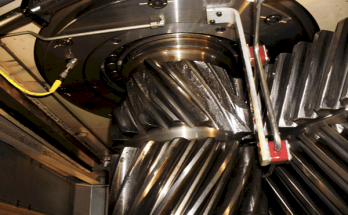Post Preview
The Rise of Digital Broadcasting
The world of radio has undergone a rapid transformation, shifting from traditional analog broadcasts constrained by equipment and frequency limits to a flexible, global digital landscape. Today, anyone from a large-scale broadcaster to an independent hobbyist can launch and manage a station with ease. Central to this revolution is the emergence of accessible radio broadcast software, which has become the foundation for modern, internet-powered stations.
With radio broadcast software, broadcasters are no longer tied to expensive studios or local infrastructure. Cloud solutions and integrated platforms allow seamless broadcasting from any location, expanding the scope of content creation and the diversity of voices in the audio landscape. Digital technology opens the door for new business models and creative approaches that weren’t possible just a decade ago.
Advantages Of Modern Radio Tools
The move to digital tools has made broadcasting more accessible. Platforms now provide user-friendly interfaces, mobile apps, and simple content management, making station setup and operation easier. Scheduling, live interaction, and listener monitoring are streamlined, helping stations of all sizes adapt quickly without high costs or expertise. Broadcasters can customize workflows, explore new content formats, and measure audience engagement in real time. Accessible radio technology empowers new broadcasters to reach niche and global audiences, transforming radio in the digital age.
Key Technologies Shaping Radio
- Cloud-based Broadcasting: Cloud infrastructure enables remote management of stations, effortless uploads, and collaboration across teams.
- Advanced Analytics: Real-time data collection provides deeper insights into listener demographics, behaviors, and preferences, allowing stations to refine content and advertising for maximum impact.
- Mobile Integration: Mobile apps and notification systems allow listeners to tune in anywhere, receive show reminders, and interact with broadcasters instantly.
These innovations are foundational to the modern radio landscape and critical for stations seeking to expand their presence in an increasingly digital, mobile-first world.

Automation And Streamlining Workflows
Automation is revolutionizing broadcasting by streamlining workflows and managing content. Scheduling systems, playlist generators, and auto-DJ tools save time and resources. When live hosts are unavailable, pre-recorded shows, news updates, and music libraries can be played seamlessly, ensuring dynamic and engaging stations. This results in greater operational efficiency and sustainability, especially for lean teams or volunteer staff. As digital broadcasting platforms evolve, these features are becoming industry standards.
Audience Engagement In The Digital Age
Today’s listeners expect interactivity and personalization. Modern radio uses live chats, interactive polls, and push notifications for real-time engagement. Social media helps stations expand their digital reach, promote shows, and host cross-platform conversations. These strategies attract and retain listeners. Broadcasters focusing on interactivity can build communities and boost loyalty in a crowded market.
Podcasting And Radio Convergence
The line between live radio and podcasts is blurring, with many stations repurposing shows as on-demand episodes and mixing podcast segments into daily programming. This hybrid approach helps broadcasters reach audiences who prefer on their own schedule, increasing content value and reach. The merging of radio and podcasting fosters new storytelling techniques and distribution models, encouraging experimentation with format, length, and style.
Future Trends And Opportunities
Artificial intelligence and voice tech will further disrupt broadcasting. Automated assistants may handle real-time song requests and news, while AI analytics could create hyper-personalized playlists based on listener mood and behavior. As platforms expand with multi-channel streaming and 3D audio, broadcasters using new tools will be best positioned for growth.
Conclusion
Digital transformation has ushered in an era of unprecedented creativity and opportunity in radio broadcasting. Whether you are an aspiring broadcaster or a seasoned industry professional, leveraging the latest digital tools, focusing on interactivity, and adapting to evolving audience habits are crucial strategies for success and relevance in this dynamic landscape.
also read: Are Professional Ceramic Coatings Worth the Price Premium?



